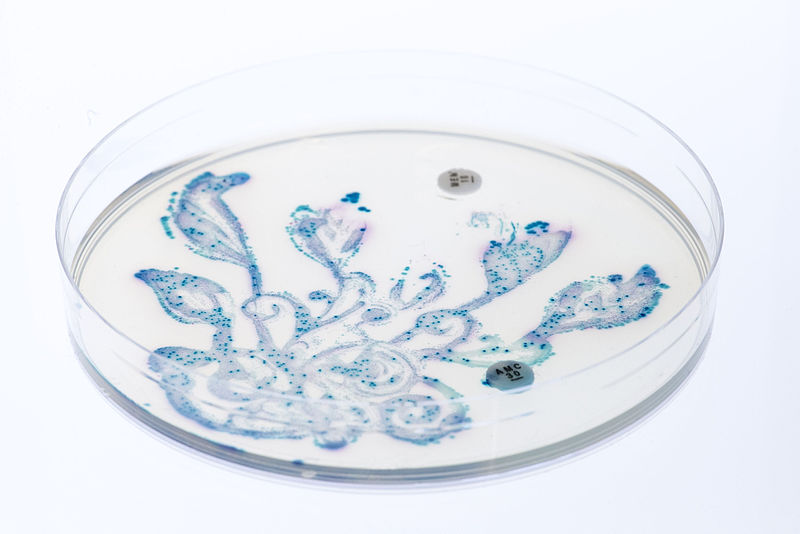A Rapid, Paper-Based Diagnostic Test for Tuberculosis
“One in seven of all human beings die from tuberculosis,” stated Robert Koch in 1881 during his speech when he revealed the discovery of the Mycobacterium tuberculosis, the bacteria that causes tuberculosis (TB). However, even now, tuberculosis still remains one of the top ten causes of death in the world more than 125 years later. Although tuberculosis is not as prevalent in the United States as in other countries such as Indonesia and China, there were still over 9000 cases reported in the United States (US) in 2016. According to the Centers for Disease Control, the decline of TB is still too slow to fully eliminate it from the US population in this century due to a lack of treatment for those at risk or those unaware of carrying latent TB.
Commonly, people are screened for TB with the Mantoux test, but this can result in false positives, such as for individuals from other countries who were administered the Bacillus Calmette-Guérin vaccine. Further diagnosis for TB is done through blood tests, X-rays, CT scans, and molecular tests such as PCR. However, these methods are costly and require ample amounts of time before results can be produced, making it less practical in developing countries where TB is still a major public health issue. Because of this, since September of 2017, researchers in Taiwan have begun designing a new paper-based analytical device with colorimetric gold nanoparticles to diagnose tuberculosis, aiming to be more cost-effective and efficient for testing TB for large populations.
Commonly, people are screened for TB with the Mantoux test, but this can result in false positives, such as for individuals from other countries who were administered the Bacillus Calmette-Guérin vaccine. Further diagnosis for TB is done through blood tests, X-rays, CT scans, and molecular tests such as PCR. However, these methods are costly and require ample amounts of time before results can be produced, making it less practical in developing countries where TB is still a major public health issue. Because of this, since September of 2017, researchers in Taiwan have begun designing a new paper-based analytical device with colorimetric gold nanoparticles to diagnose tuberculosis, aiming to be more cost-effective and efficient for testing TB for large populations.
Image Source: 4X-Image
The design of the device involves the use of gold nanoparticles because of their unique property of being colorimetrically observable. Gold nanoparticles can reflect different colors when they interact with light. Specifically, red and blue are analyzed in this diagnostic test. In order to test their device, the researchers mixed these gold nanoparticles with double-stranded DNA (dsDNA) samples collected from patients who tested negative for TB (who would serve as the control group) and from patients who tested positive for TB. Then, single-stranded DNA (ssDNA) probes were added into the gold nanoparticle and TB positive or TB negative DNA solution. The ssDNA, being complementary to the TB positive DNA strands, would bind to them and confirm TB. This mixture was then transferred to small circular wells on cellulose paper. The entire solution was initially red. Next, the solution was heated to denature the DNA: the hydrogen bonds that connect the two strands broke apart so that the ssDNA could bind to the complementary locations on the original TB positive DNA strands as the solution cooled and the hydrogen bonds rejoined. The spot on the paper turned from red to blue where the two strands successfully annealed. This occurred because the ssDNA was initially attached to the gold nanoparticles: when it annealed with the TB positive DNA strand, the gold nanoparticles aggregated and changed the color of the solution to blue, signifying that the results of a hypothetical TB test would be positive. The researchers then colorimetrically analyzed the results through the camera of a smartphone and a USB digital microscope and further confirmed the results through spectrophotometry.
In conclusion, the paper-based analytical device did detect TB successfully in the DNA extracted from TB-infected tissues. With further development, the researchers hope that their paper-based platform will provide a more affordable and specific method of diagnosis for tuberculosis and further possible applications to other diseases where current processes of molecular diagnosis can also be costly and time-consuming for individuals, especially those in developing countries. The convenience of this process could motivate more individuals to test for TB, which could result in identifying more people with latent TB and encouraging them to get early treatment. However, complete eradication of this public health issue globally will require individuals at risk to recognize the importance of TB testing and following through with treatment, and the gold nanoparticle paper-based diagnostic test will be a significant step towards this goal.
In conclusion, the paper-based analytical device did detect TB successfully in the DNA extracted from TB-infected tissues. With further development, the researchers hope that their paper-based platform will provide a more affordable and specific method of diagnosis for tuberculosis and further possible applications to other diseases where current processes of molecular diagnosis can also be costly and time-consuming for individuals, especially those in developing countries. The convenience of this process could motivate more individuals to test for TB, which could result in identifying more people with latent TB and encouraging them to get early treatment. However, complete eradication of this public health issue globally will require individuals at risk to recognize the importance of TB testing and following through with treatment, and the gold nanoparticle paper-based diagnostic test will be a significant step towards this goal.
Featured Image Source: WikiImages
RELATED ARTICLES
|
Vertical Divider
|
Vertical Divider
|
Vertical Divider
|





